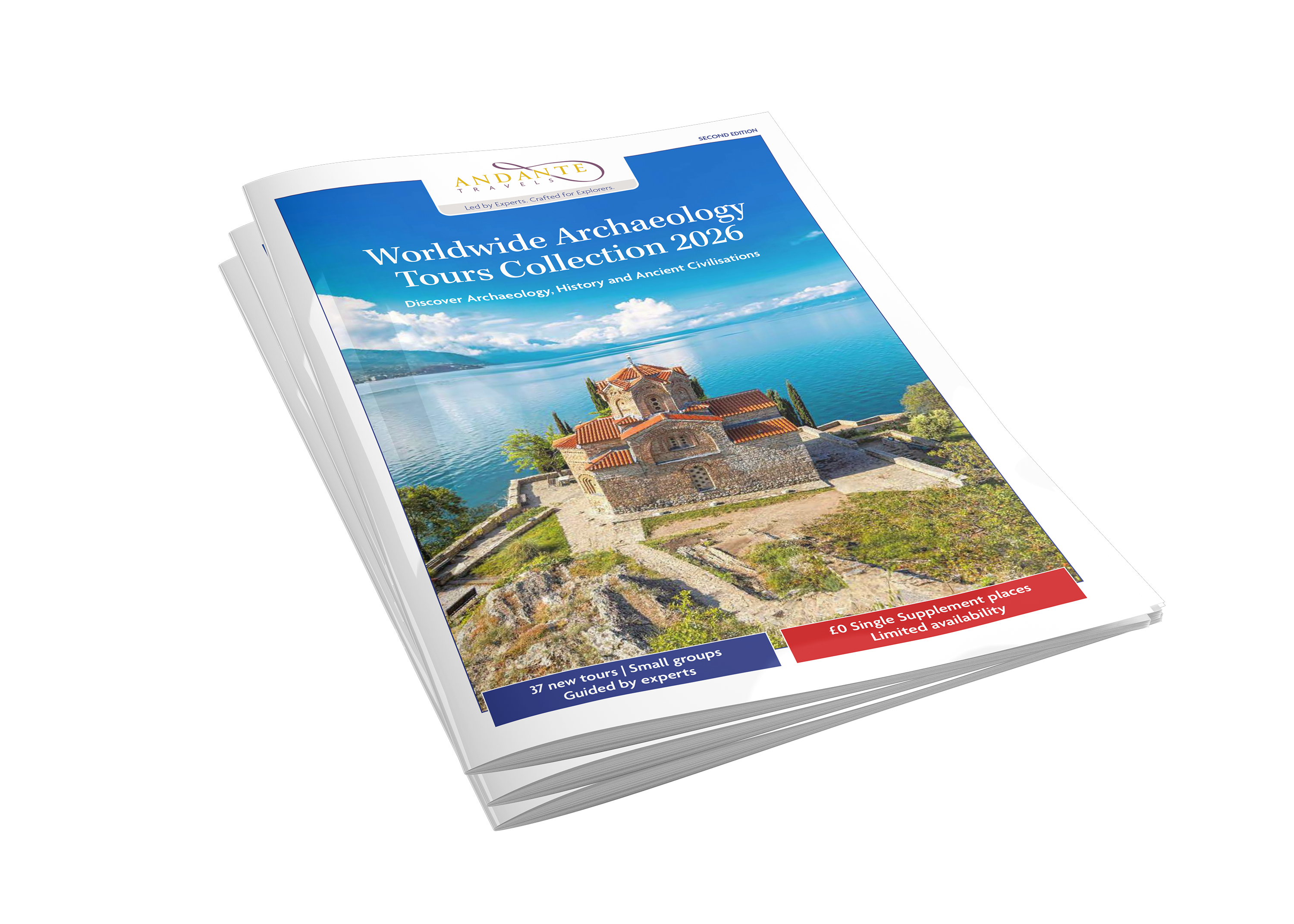Everything you should know about Pompeii
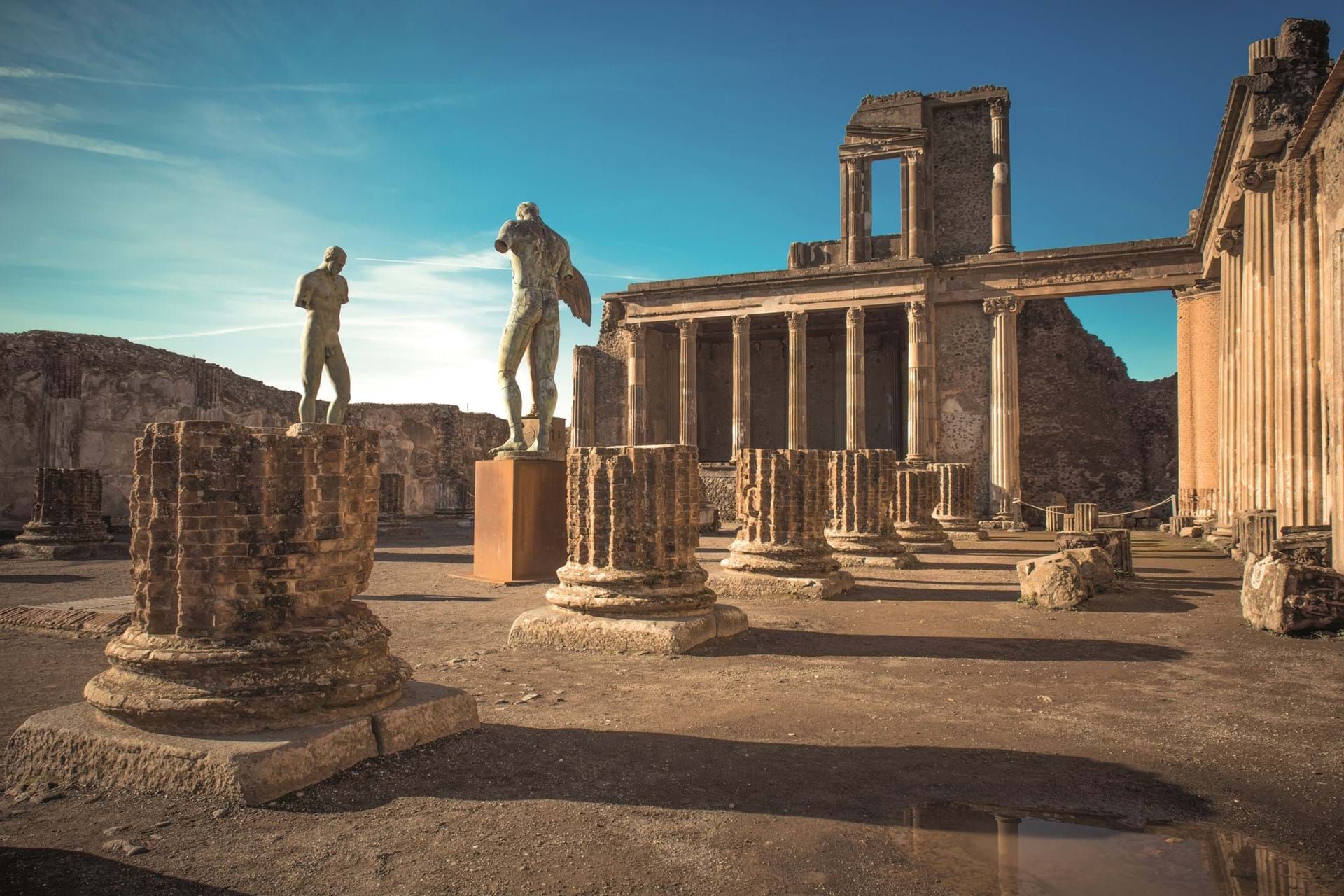
Pompeii archaeology is world-renowned and this haunting Italian site has been one of our best-selling tour destinations for years now – decades, in fact – and we have rounded up everything you need to know about it here. On this page, we will discuss topics that range from how the Vesuvian victims died to what life in Pompeii was like before the eruption, and from the best time of year to visit Pompeii to when it was actually destroyed, and much more.
One of our longest-running and most popular tours, Pompeii is both an entry-level archaeological experience as well as one for the seasoned historians among us. Guests from all walks of life and with all grades of knowledge take something away from a visit to the Pompeii archaeological park, whether it’s a story shared by one of our expert guides who knows the site personally, both inside and out, or a deeper understanding of mortality and the human experience – it truly is a life-changing place to visit, and we can’t recommend it enough.
The widely reported date of Vesuvius’ cataclysmic eruption, which buried this coastal city beneath a blanket of ash and pumice, is known as 24th August AD 79, but our award-winning expert Guide Lecturer Dr Eireann Marshall says this may not be the case, so we have handed the floor over to Eireann to answer all of your questions about Pompeii.
When was Pompeii destroyed?
Perhaps the most publicised discovery from the Regio V excavations is the graffito in a sure hand, which says “XVI (ante) K(alends) Nov(embres) in[d] ulsit pro masumis esurit[ioni]” and can be translated as “17 October (16 days before the Kalends of November) he over-ate”. This was scribbled on one of the walls of the House of the Garden, in one of the rooms that was still being renovated, as is evidenced by the flooring and lack of plastering on some walls.
While the graffito doesn’t include a year, the fact that it is written in charcoal – a medium that is easily removed – suggests it was written shortly before the eruption. For those of us who grew up reading Pliny, the eruption of Vesuvius is firmly etched in our minds as 24th August – or, rather, had been etched until an increasing amount of evidence was assessed, suggesting that the eruption actually occurred in the autumn. The evidence in question includes a dolia full of wine (suggesting a recent wine harvest had been done), the heavier clothes on some of the victims, jars filled with preserved summer fruits, and – perhaps most telling – a coin that celebrated the 15th acclamation of the Emperor Titus, an event that occurred in September AD 79 (the coin must have been minted after this and dispersed throughout Italy afterwards).
This charcoal graffito is a lovely addition to this largely settled debate. It has made me realise just how reliant we are on transmitted information. The reason why August 24th has been favoured until now is that it is included in all translations of Pliny the Younger’s famous account of the eruption – in his letter to the historian, Tacitus (6.16). This date was included in the Codex Laurentianus Mediceus, which Aldus Manutius – the influential Venetian publisher – used for his edition of Pliny’s letters. As the first complete edition of Pliny’s letters, Manutius’ publication has been the basis of later versions and, for that reason, the August 24th date stuck. The telling giveaway that the August date was a corruption is that the date is given as Nonum Kal September, rather than the more correct a.d. IX kal.sept. Hindsight is a wonderful thing.
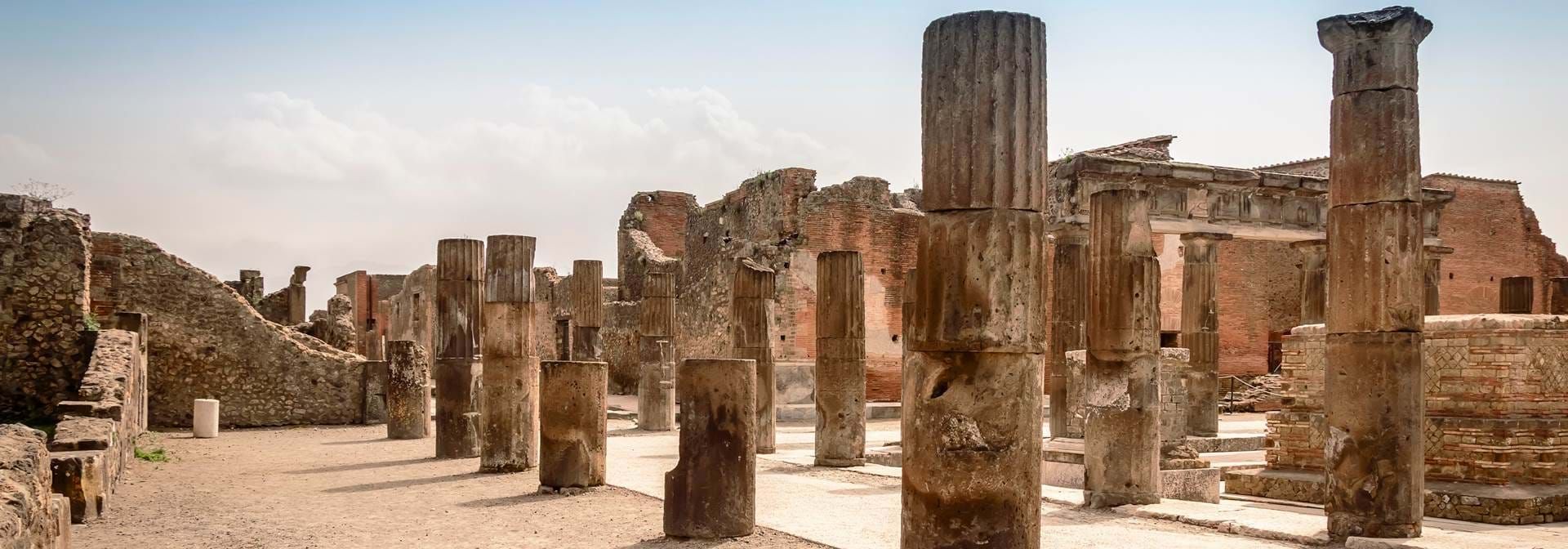
How did the Pompeii victims die?
Perhaps the most exciting discoveries are the most gruesome. Recent excavations in Pompeii have revealed more bodies than have been found in decades and have done so just when modern technologies have developed, which allows us to study the lives of individuals through their skeletal remains. What makes the Vesuvian bodies crucial is that a range of individuals who didn’t die of natural causes have been uncovered, meaning that archaeologists can study a pool of ordinary, healthy people.
The incredible find in February 2019 of a 7- or 8-year-old child in the Central Baths, a site that was thoroughly excavated in the 19th century, emphasises just how much archaeology has developed. Where archaeologists in the 19th century presumably left the skeleton in situ because they couldn’t make a good plaster cast of it, modern archaeologists have exhumed the skeleton because of the information it can provide.
The most important cache of bodies was found in October 2018 in the House of the Garden, where 10 bodies were found strewn around the room by looters (perhaps before 1748 when the excavations of Pompeii began) who were most likely only after expensive items. While we await the results of the osteoarchaeological studies of the skeletons, what this moving collection of bodies reveals is that people, in times of crisis, like to congregate with others close to them. The same phenomenon has been seen many times over in Pompeii, famously in the House of Julius Polybius, but also in Oplontis.
Rather more has been revealed about the bodies discovered in the ancient warehouses of Herculaneum in a study from 2018, carried out by Petrone from Federico II University Hospital. Using ICP-MS and Raman miscrospectroscopy, Petrone identified the red and black residues found on the Herculaneum bones, skulls and artefacts as blood that had vaporised, along with other internal bodily fluids, as a result of the extreme heat from the pyroclastic flow that overwhelmed Herculaneum. Examining the cracks in the skeletons and skulls, Petrone concluded that the brains and bodily fluids of the victims had boiled, causing the skeletons to crack, the skull caps to explode and fluids to escape. This demonstrates, in graphic terms, how the citizens of Herculaneum died – of fulminant shock, rather than from asphyxiation. Small comfort can be gained from the fact that the people would have been killed faster than their reaction times would have registered consciousness – ultimately, they died before they knew it.
The cause of death in the 54 individuals found in Oplontis B, however, is far less clear and it is one of the things that a team led by Kristina Killgrove and Nic Terrenato are hoping to learn through 3D photogrammetry and osteological analysis. This building, which appears to be an emporium owned by L. Crassius Tertius on the basis of a seal ring found at the site, has revealed priceless artefacts, including transport vessels, jewellery, food stuffs, and even human remains. The Oplontis Project, led by John R. Clarke and Michael L. Thomas of the University of Texas, has revealed much about the villa and its victims.
Using anthropological, isotopic and DNA studies, Killgrove and Terrenato are studying the bones of the Oplontis victims, along with some from Pompeii, in order to get a better picture of the lives of ordinary people, including their diets and pathologies. This is all the more interesting since the 54 victims, huddled in one room on the ground floor, appear to have separated themselves into two groups based on social status. Their findings so far have suggested that many victims from Oplontis were related (on the basis of dental and skeletal similarities) and that the victims were generally well off. Interestingly, the people found at Oplontis seem to have not suffered from anaemia and appeared to have had balanced diets, although the teeth of some of the children indicate periods of hunger. Unlike the teeth of the Herculaneum skeletons, those of the Oplontis victims show a lot of dental problems. This study’s work with 3D photogrammetry has brought some of these individuals to life. One of the most moving examples is that of a young woman, who survived a cranial blunt trauma and was 36 weeks pregnant at the time of her eruption, the tiny bones of her foetus having almost all been found entirely reconstructed.

What was Pompeii like before the eruption?
Although recent finds have not offered evidence that revolutionises the way we understand ancient religions, they do give glimpses into the religious or spiritual lives of Pompeiians. A couple of lararia have been found in Regio V, including a spectacular one whose paintings are remarkably well-preserved, accessed from the Vicolo of Lucretius Fronto. Found in 2018, this lararium is one of the largest found in Pompeii and it has a small garden whose plants would have resembled those painted onto the wall. In a wonderful trompe l’oeil, the peacock depicted on the fresco would have looked like it was walking in the garden itself. More poignantly, archaeologists found remnants of burned offerings in a vessel at the foot of the shrine, a tangible link to the Pompeiian family who worshipped here in the hopes of a prosperous future.
Amulets and jewellery found in the House of the Garden in 2019 offer a tantalising glimpse into the world view of Pompeiian women. The finds include two mirrors, some glass beads, as well as a number of pendants in the shape of little phalluses, closed fists, skulls and scarabs, which were originally enclosed in a wooden box that has since disintegrated. The inclusion of scarabs and Harpocrates underlines the popularity of Egyptian cults in this trading town, while the amulets, as a whole, appear to be apotropaic good luck charms.
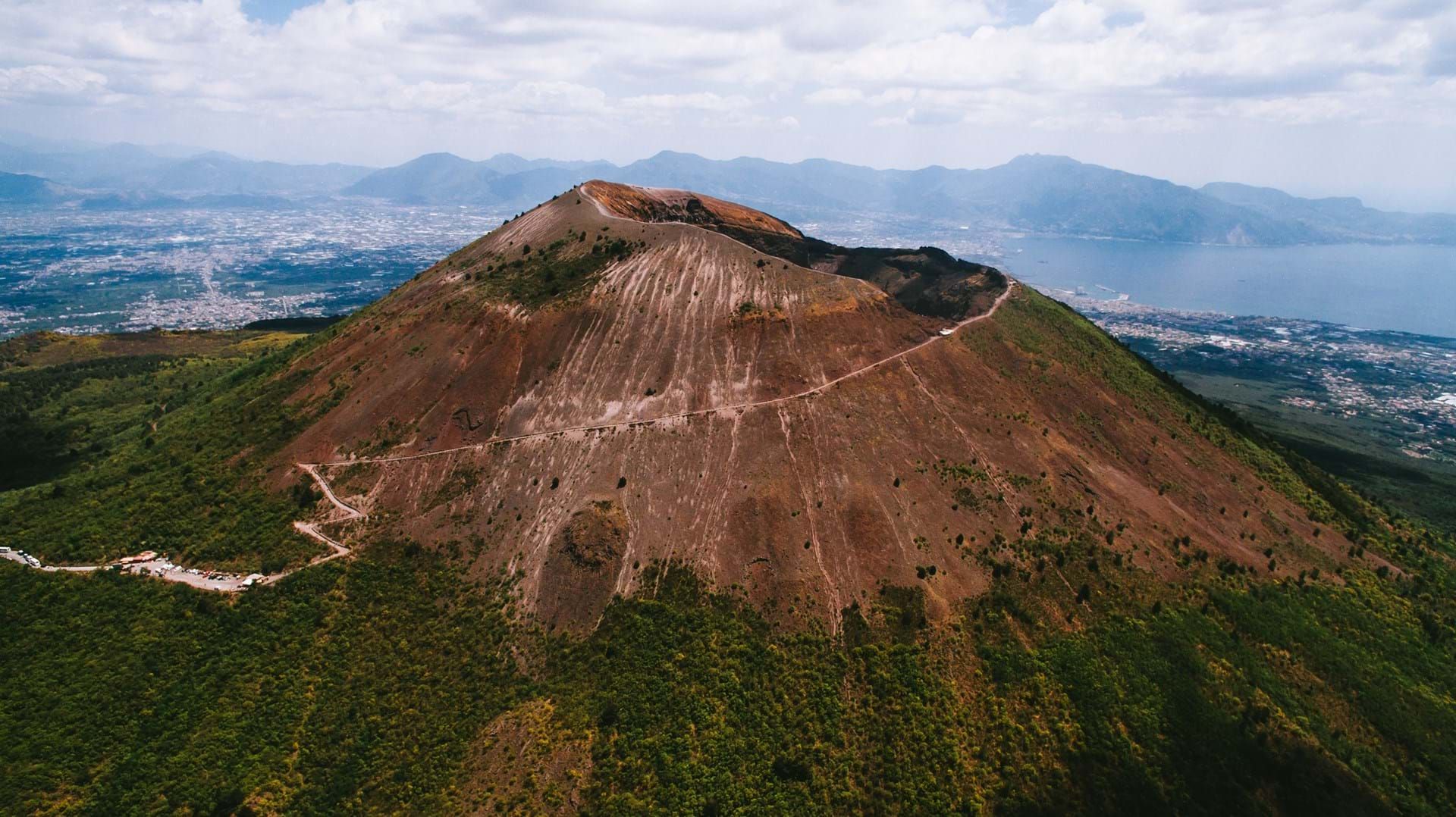
What’s the best way to visit Pompeii?
It would hardly be surprising to learn that Andante Travels, the leading archaeological tour operator, offers a more in-depth and more researched itinerary of these Vesuvian towns than its competitors. It is what we do best, and we pride ourselves in getting this tour right.
We dedicate an entire day to Pompeii, visiting the Villa of the Mysteries at the end of the site after eight solid hours of exploration – and just in time for a refreshing Peroni at the Ristorante Bacco ed Arianna right outside the site. By the time I sit down, my feet always force me to recall Jennie Robson’s quip that Peroni restores to you what Pompeii has taken out! This is a tour that requires not only a guide lecturer and a tour manager, but also a local guide in the form of Daniela Mantice, who helps coordinate the visits to ensure our guests see both the most important and least-visited sites. Much of this work takes place ahead of time, through frequent emails and WhatsApp messages to Daniela, in order to keep abreast of the often-changing situation on the ground.
What’s more, where other companies spend just a morning in Herculaneum, we are spending an entire day there, in the knowledge that Sirano is opening more sites. The Theatre of Herculaneum is going to be the most exciting – at least for me. The same desire to offer guests something special and different also led us to include a visit to the Cave of Sejanus in Posilipo. Both sites, however, require booking ahead of time as well as communicating with curators to ensure that we choose the best time slots for our visits.
For us, taking guests to sites considered off the beaten track is what makes our specialist tour company truly special. A lot of networking goes on behind the scenes, as you might imagine, to make our tours as innovative and up-to-date as possible. It was through conversation with archaeological friends in Paestum that our regular visits to the incredible storerooms of its museum were set up. The Paestum Museum doesn’t have the space to display over 100 tombs, so they’re kept in the storerooms, which we grant access to on our Pompeii tours. It was also from one of these conversations that I was able to coordinate with Zoe Schofield, from the Oplontis Project, to talk a group in Oplontis about her cataloguing of the painted borders. There is something about the excitement of Pompeii that has kept me in touch with other guide lecturers, too. Doru Bogdan and Jamie Sewell both dug in the Temple of Venus area a few years ago. Another Pompeii guide lecturer for Andante, Diana Blumberg, has recently worked on the exciting Casa della Regina Carolina project run by Cornell University. The central focus of this project is to excavate the garden area in order to gain a better understanding of what was grown and how it would have been organised.
So, all that’s left to say is that Pompeii and Herculaneum are ever-changing sites for any archaeology or history enthusiast, and no two visits are ever the same.
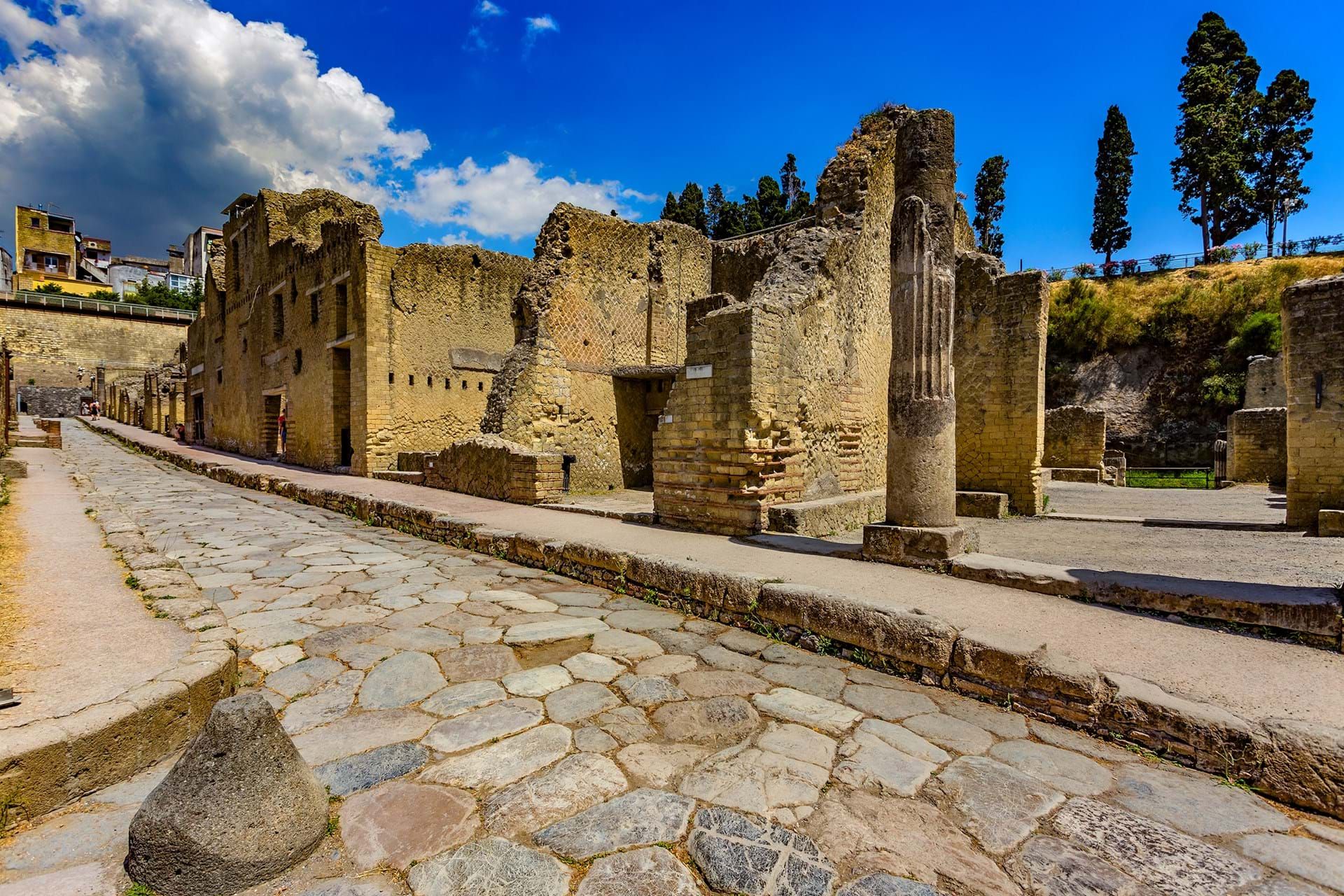
Where are the Pompeii bodies located?
At the Boat Houses in Herculaneum there are many haunting skeletal remains in situ and you’ll also be able to see plaster casts of bodies dotted around the archaeological site in Pompeii. The casts, it’s worth noting, were made by excavators who poured plaster into the spaces around the human remains to bring their poses back to life.
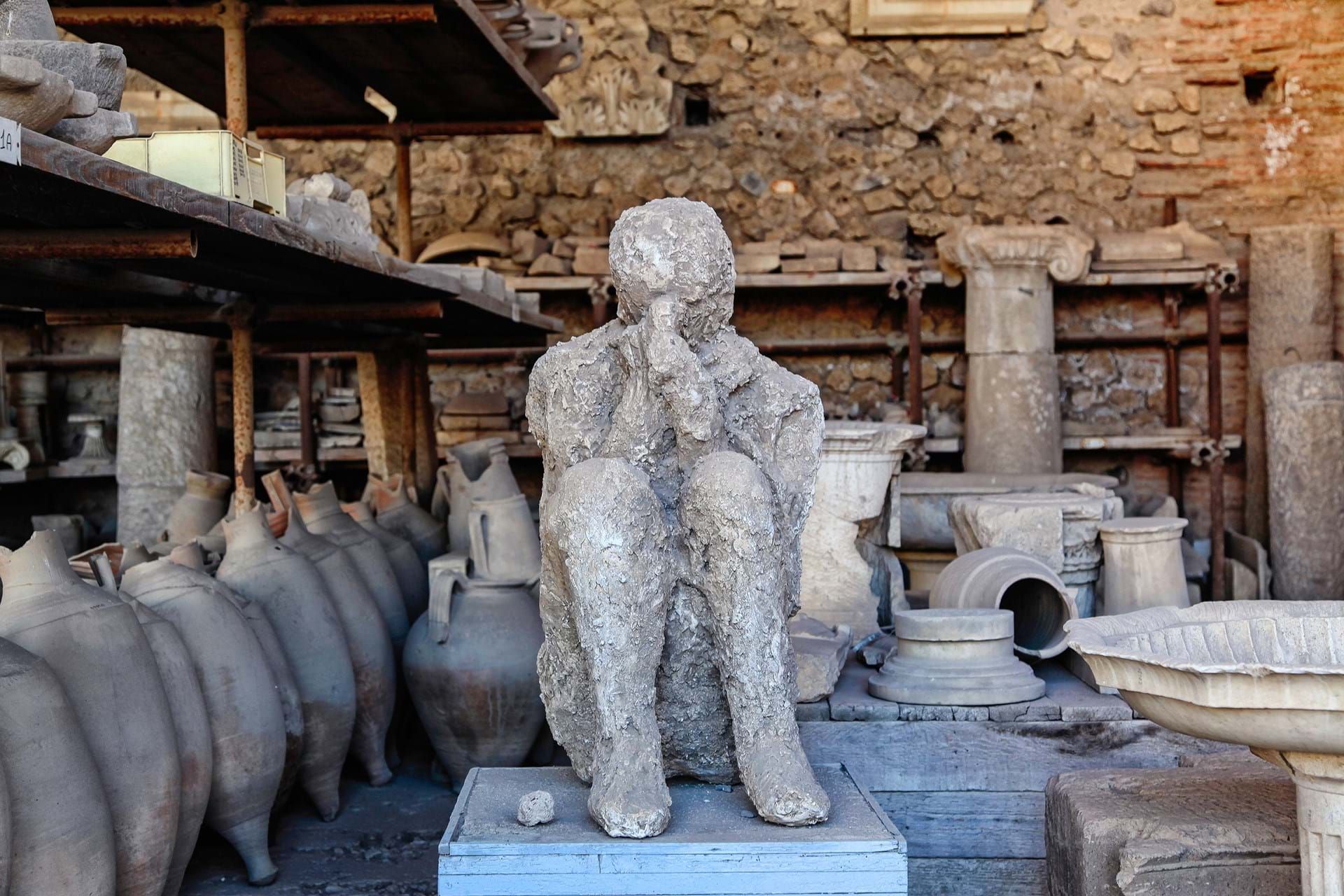
Can you visit Vesuvius?
Yes, you can – and it’s worth the trip as the view from the top will put the history of Pompeii and Herculaneum into context in a way that books or films simply cannot. If you book our best-selling Pompeii, Herculaneum & Classical Campania tour, you will have the chance to hike to the great crater of Vesuvius. A bus will take you most of the way up this mighty volcanic crater, and then a short walk is required to reach its summit. From the top, you’ll also be able to observe different coloured lava rock that sits in layers.
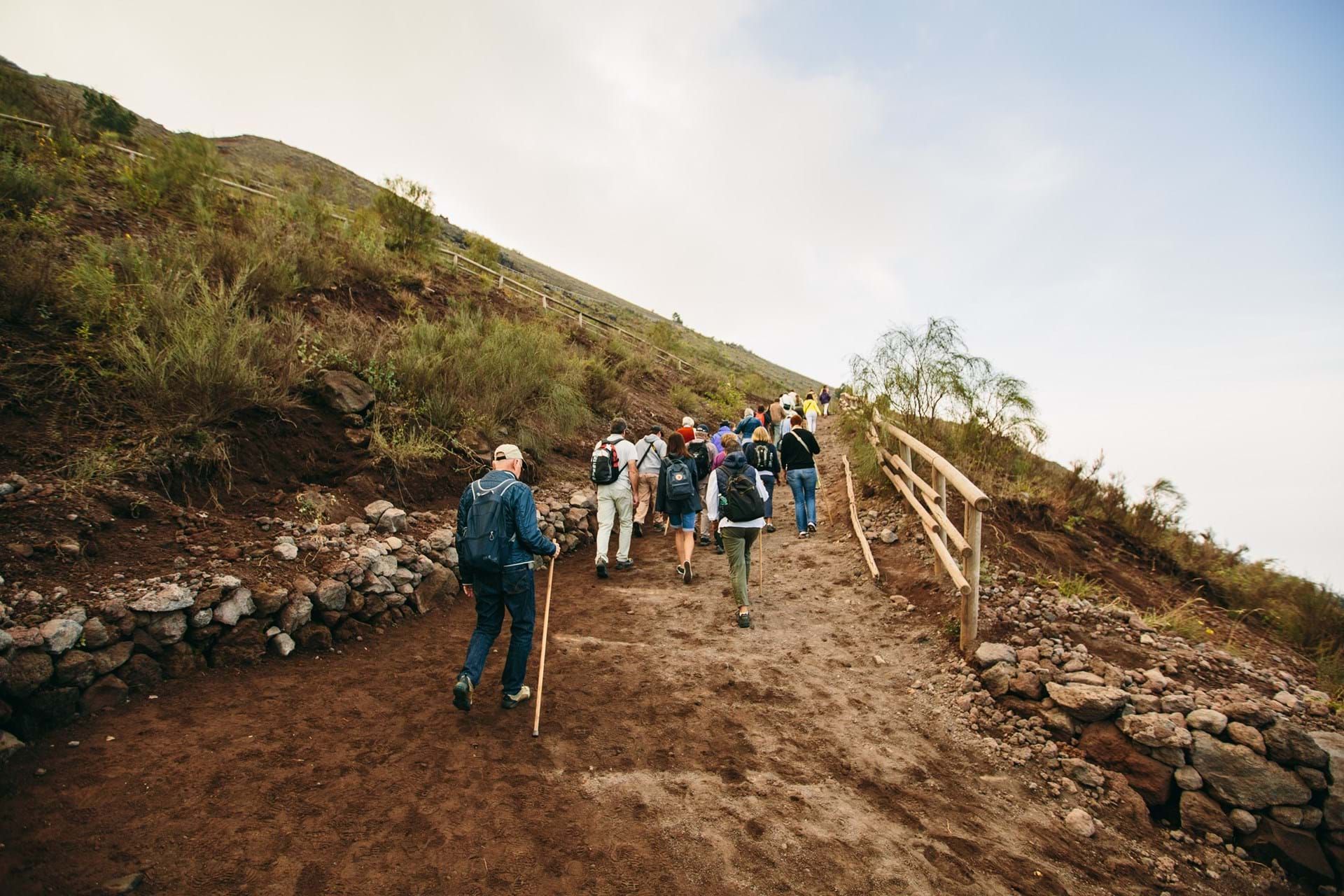
When is the best time to visit Pompeii?
Due to the hot Italian summer weather, it’s advisable to avoid these peak months as you’ll spend a considerable amount of time outside. Our Pompeii tours pause in late May and resume again in mid-September, which ensures your trip will be as pleasant as possible! It’s also really great to experience the sites in the winter, so keep an eye out for any very late or very early in the year departures. Travelling off-season also means you’ll get to avoid the typical tourist crowds that can make both Pompeii and Herculaneum feel very busy at times. We have a couple of these departures, don’t miss them!
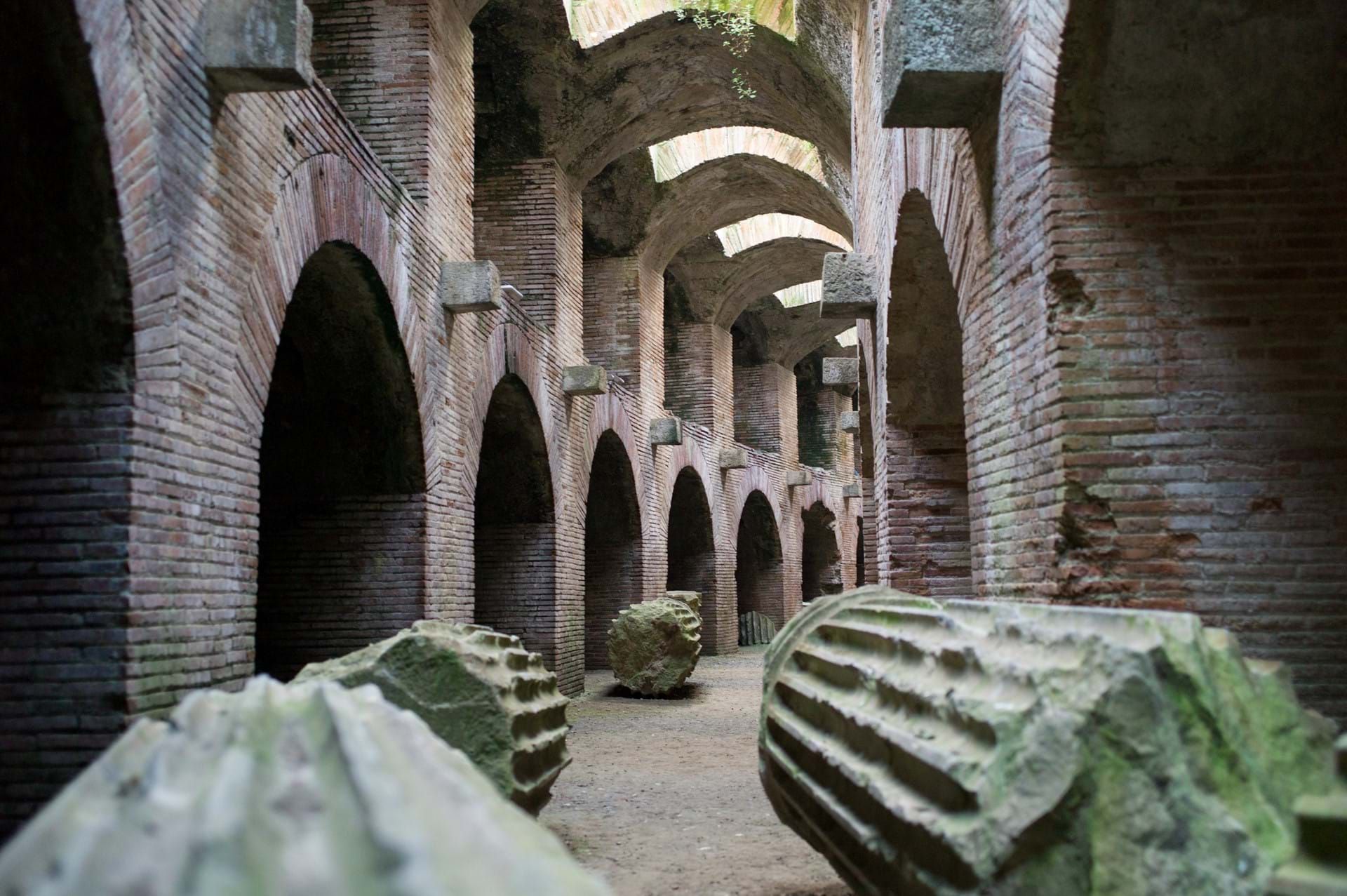
How are Pompeii and Herculaneum different?
Pompeii is the bigger of the two sites, taking significantly more time to explore in full. Herculaneum is smaller, meaning that you can get around and discover its evocative remains in just a half-day if you’re pushed for time. The thing we love the most about the latter, though, is that it was buried to a greater depth than Pompeii and it boasts houses that in some cases are completely preserved up to their rooftops. What’s more, it’s a site that has fewer visitors, making for a more pleasant touring experience – especially under the heat of the southern Italian sun! Interestingly, Pompeii’s destruction by Vesuvius’s eruption was more direct and this volcano completely incinerated everything in its path here. Herculaneum, on the other hand, was buried under slower-falling ash. This meant that the preservation of buildings was much more complete – with entire houses, as well as the everyday items contained within them, paused in time.

Why choose Andante for your Pompeii tour?
No one does it quite like Andante, the first specialist UK tour operator to go beyond the surface of cultural travel, to dig deeper into the past and create unique explorations of some of the world’s most famous archaeological sites – Pompeii included:
- Travel with esteemed experts
- Explore Pompeii as part of a small group
- Enjoy special access experiences
- Travel with like-minded people
- An archaeological tour with an award-winning company
Our tours are award-winning, with itineraries conceived and planned in tandem with the specialists who lead them. The relationships our expert Guide Lecturers have with the sites and their local custodians means that we know the best way to approach them, exploring parts often missed by the mainstream visitor and arranging special access where possible.
You will explore Pompeii as part of a smaller group, giving you the chance to get to know your fellow travellers personally. The benefit of this extends to the relationship you will forge with your Guide Lecturer, who will be on hand to answer your questions throughout the day, from breakfast right through to dinner.
The hotel you will stay at is hand-picked, you will savour local culinary specialities and you will also encounter the culture of your destination on tour with Andante. When you travel with us, you will be looked after round the clock, with tour staff on hand to help whilst you’re away and UK-based office staff here to help both before and after your ancient world adventure – including any assistance with official form-filling.
Most aspects of your tour are included, such as return flights from London and entry to sites, and from tips and treats to water throughout the day or wine at dinner, so all that’s left to do is book your tour, pack those cases, and join our experts for an experience to remember.
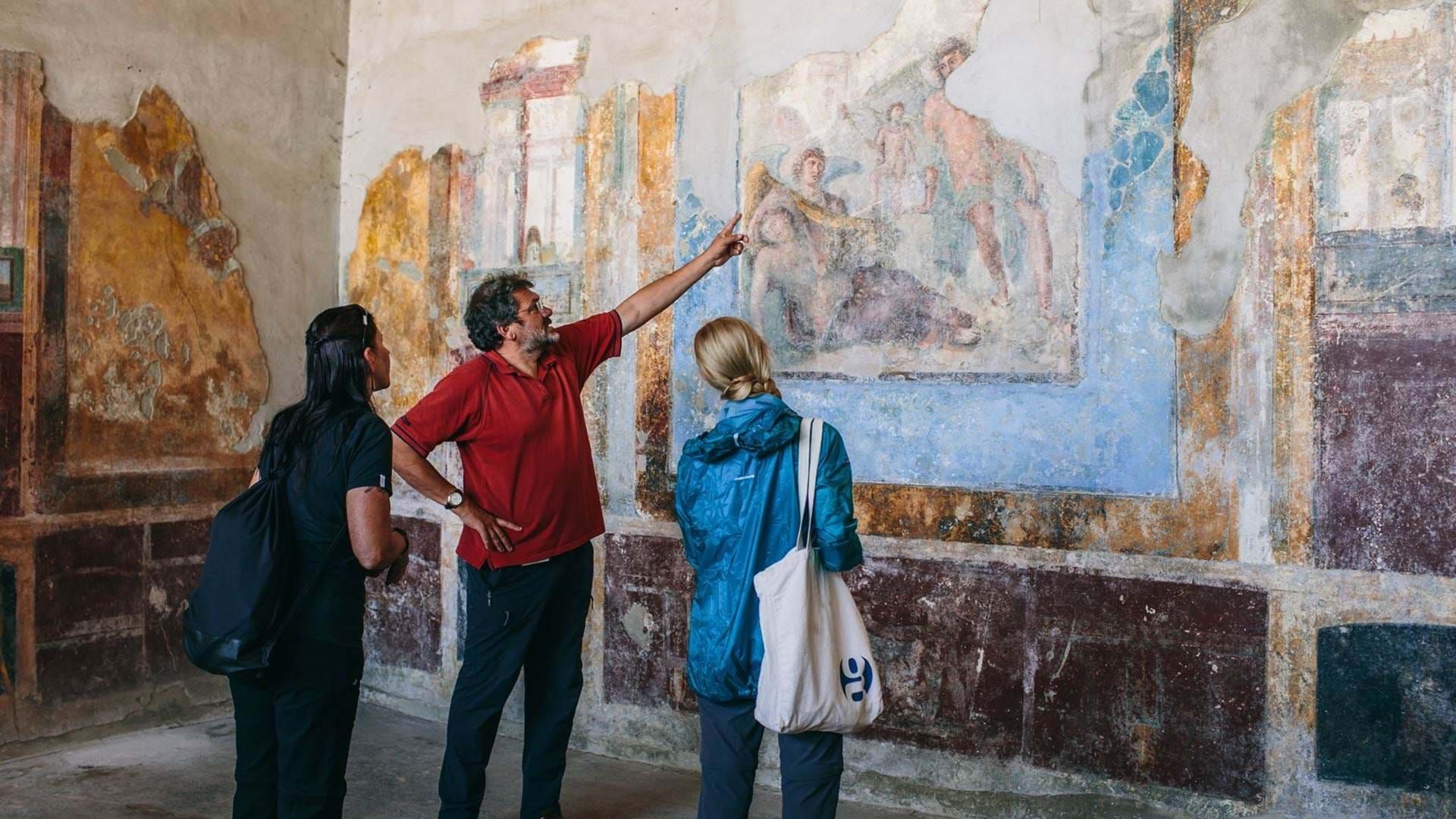
Our current Pompeii tours
For first-timers
If you’re looking for the ultimate Pompeii experience, try our best-selling Pompeii, Herculaneum & Classical Campania tour. This eight-day exploration includes such highlights as a hike to Vesuvius’ dramatic crater, private access to the Cave of Sejanus and visits to ‘off the beaten track’ villas at Stabiae. There are many departures to choose from and we have an array of expert guides at the helm, who will illuminate the sites you visit along the way with their personal knowledge.
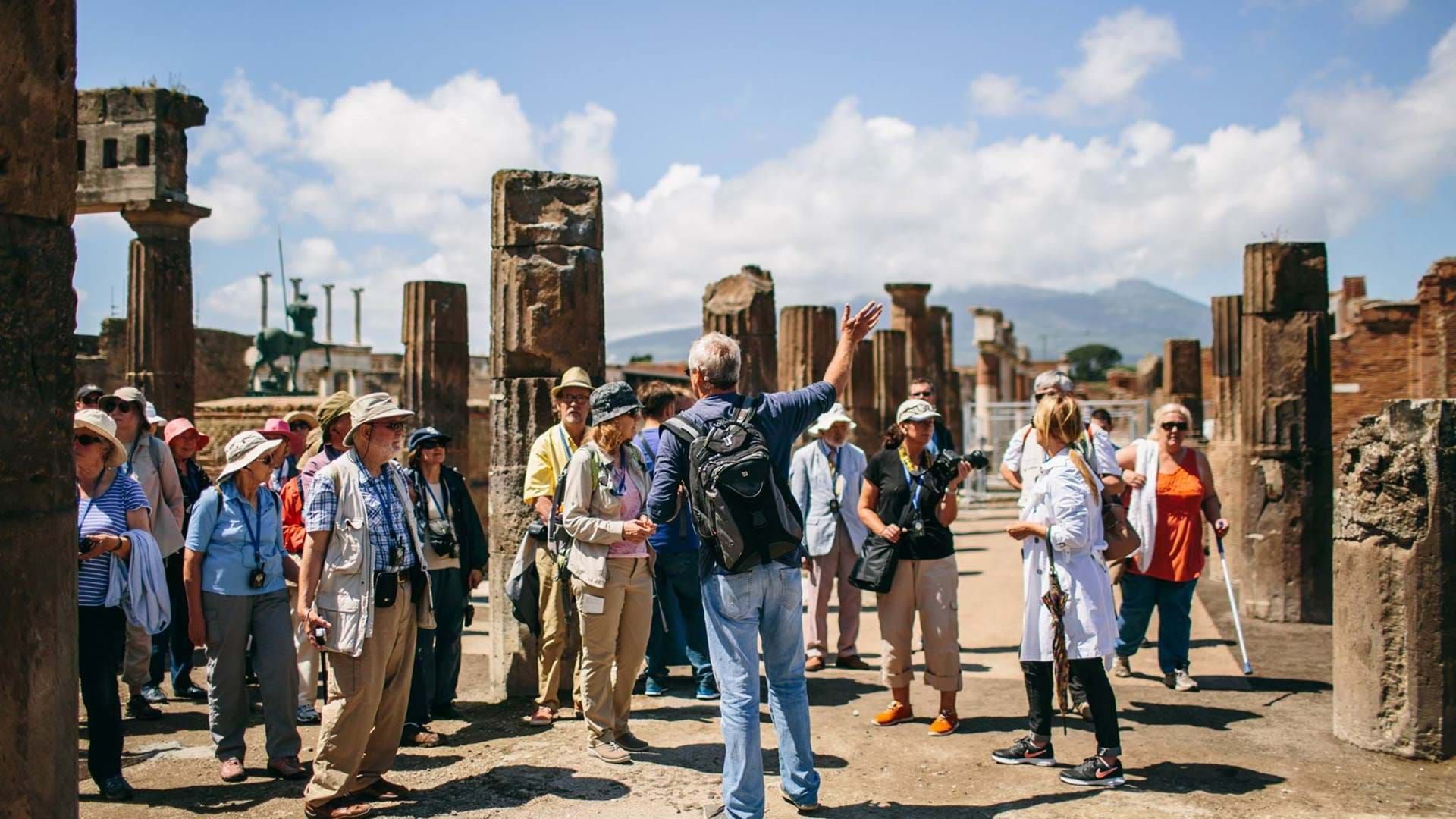
For solo travellers
Our eight-day Romans on the Bay of Naples tour has £0 single supplement to pay, making it an ideal choice for solo travellers. The itinerary includes visits to both Pompeii and Herculaneum, as well as visits to the amphitheatre at Pozzuoli, Capri, Amalfi, Positano and Somma Vesuviana, where the Villa Augustea is opened especially for our tour groups.

For a shorter break on a budget
Whether you’re pushed for time or simply want a shorter break, our Highlights of Pompeii tour is a great choice at just five days in duration. This trip offers an unbeatable introduction to ordinary Roman life and highlights include visits to both Pompeii and neighbouring Herculaneum, along with the villa at Oplontis, owned by the family of Nero’s wife, and Naples’ incredible Archaeological Museum, which is home to extraordinary finds from the local area.
Archaeology Holidays
NEWSLETTER
Opt-in to our email newsletter and hear about new offers first – view our privacy policy for details.
